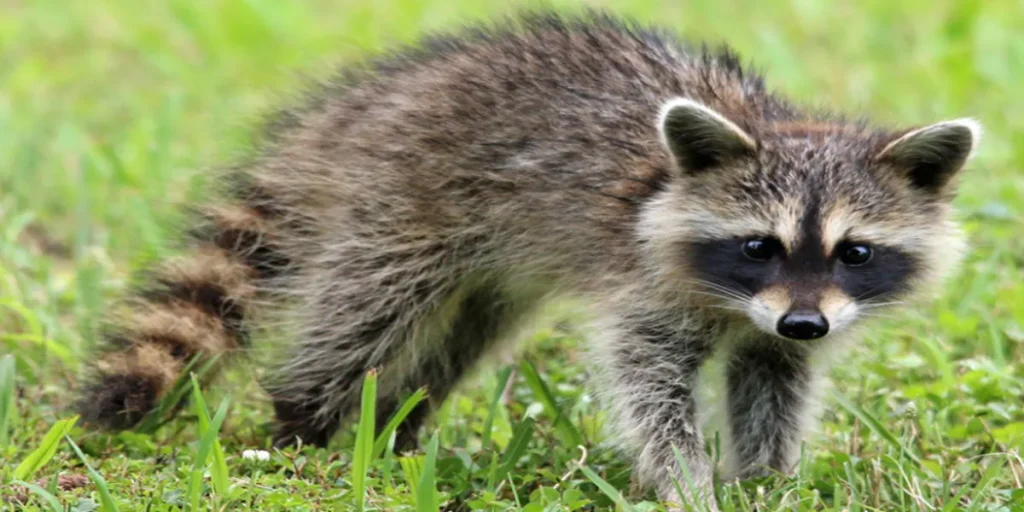An adult raccoon typically weighs between 14 to 23 pounds (6.3 to 10.4 kg). This weight can vary based on diet and location.
Raccoons are medium-sized mammals native to North America, recognized by their distinctive black mask and ringed tail.
These nocturnal creatures are highly adaptable, able to thrive in forests, mountains, and urban environments alike.
With their omnivorous diet, raccoons consume a varied menu, including fruits, nuts, insects, and even small amphibians, which contributes to their size and weight.
Understanding a raccoon’s weight is crucial for wildlife management, rehabilitation, and research.
These clever foragers are known for their remarkable dexterity and intelligence, often seen as one of nature’s most resourceful animals.
Their weight not only reflects their health and well-being but also influences their ability to survive in diverse habitats.
Average Weights Unveiled

Raccoons are known for their curious nature and mask-like facial markings. But just how much do these nocturnal creatures weigh?
This question uncovers crucial insights about their health, habitat, and lifestyle. Let’s deep dive into the world of raccoons and discover their average weights!
Size Variation Across Regions
Raccoons vary in size depending on their geographic location. The environment plays a key role in their overall size and weight.
- Urban raccoons tend to be heavier. They often have access to more food sources.
- Rural raccoons may weigh less. They rely on natural resources.
Typically, raccoons from colder regions grow larger. They need extra fat to stay warm.
Male Vs Female Raccoons: Weighing The Difference
Male and female raccoons show a notable difference in weight. The males, called boars, generally tip the scales at a heavier weight than the females, known as sows.
| Gender | Average Weight |
|---|---|
| Male (Boar) | 8.5 to 20 lbs (3.8 to 9 kg) |
| Female (Sow) | 7 to 15 lbs (3.2 to 6.8 kg) |
Understanding these weight differences helps in studying raccoon behavior and population dynamics.
Raccoons In The Wild Vs. Urban Environments

Curiosity often piques when pondering over raccoons gracing both wildlands and cityscapes.
These clever critters adapt to diverse environments, but how does this adaptability affect their physique, particularly their weight?
Impact Of Habitat On Weight
Raccoons in different settings don’t always tip the scales equally.
- Wild raccoons roam vast territories in search of food.
- Urban raccoons benefit from consistent food sources like garbage.
This leads to a notable divergence in body mass. Wild raccoons exercise more, typically resulting in leaner physiques. In contrast, urban raccoons often display greater weights due to less movement and more calories.
Dietary Differences And Their Effects
Food available in a raccoon’s environment directly impacts their diet and weight.
| Environment | Diet | Weight Impact |
|---|---|---|
| Wild | Nuts, berries, insects | Leaner bodies |
| Urban | Leftovers, trash | Possible weight gain |
Processed foods and human leftovers contribute to heftier urban raccoons. These raccoons access calorie-rich scraps with ease.
Wild raccoons consume more natural, varied diets, promoting a healthier weight range. Food type and availability significantly shape their health and bulk.
Growth And Development Stages
Juvenile raccoons are curious animals that change a lot as they grow. Just like kids, these little creatures have different stages they go through as they change from babies to big raccoons.
Knowing how much they weigh at each stage helps us understand their health and needs better.
Newborn To Juvenile: Weight Milestones
Newborn raccoons are really small, almost like a bar of soap! Within two months, they gain weight super fast. Here’s a quick look at their weight milestones:
- Birth: Around 75 grams, which is super light!
- 1 month: Can jump up to 400 grams, as they eat and grow.
- 2 months: They’re about 1 kilogram now, getting bigger!
When Does A Raccoon Reach Adult Weight?
Raccoons keep growing and don’t stop until they’re about one year old. That’s when they hit their adult size. They can weigh from 7 to 20 pounds, though it can vary.
Some factors that change how much they weigh include food, where they live, and if they get lots of exercise by climbing and exploring.
| Age | Weight Range |
|---|---|
| 3 months | 1.5 to 2 kilograms |
| 6 months | 3 to 5 kilograms |
| 12 months (Adult) | 3 to 9 kilograms |
Exceptionally Large Raccoons
Raccoons are known for being crafty urban adventurers. Sometimes they surprise us with their size.
Let’s explore some record-breaking large raccoons that have tipped the scales beyond the average.
Guinness World Records
Guinness World Records showcases the extremes of the natural world. In raccoon terms, this includes those furry giants that have set records with their weight.
- The heaviest raccoon recorded weighed over 75 pounds (34 kg).
- This fluffy giant was named Bandit and lived in Pennsylvania.
Notable Weights
Beyond Guinness, there are other notable heavyweights in the raccoon world:
| Location | Weight |
|---|---|
| New York | 28 pounds (12.7 kg) |
| Texas | 30 pounds (13.6 kg) |
Factors Leading To Above-average Sizes
Several factors can lead to larger-than-average raccoons:
- Abundant food sources, especially in urban areas
- Lack of predators, allowing for safer and longer lives
Understanding these factors helps explain why some raccoons grow exceptionally large, sometimes even breaking records.
Understanding Raccoon Weights
Have you ever spotted a raccoon and wondered just how much it weighs? Raccoon weights are not just fun facts.
They play a big role in their health and survival. This section dives into what a healthy raccoon weight looks like and why it matters for these furry creatures.
Calculating A Healthy Raccoon Weight
A raccoon’s weight can tell us a lot about its health. You can compare a raccoon’s weight to average weights to see if it’s healthy.
They can weigh from 5 to 20 pounds. But many things can change this, like where they live and what time of year it is.
- Baby raccoons (kits): usually weigh around 75 grams at birth.
- Young raccoons: gain weight fast and can weigh up to 4 pounds by the time they are 10 weeks old.
- Adult raccoons: vary a lot but most healthy adults weigh between 14 to 23 pounds.
Size and location matter too. Raccoons in northern areas tend to be heavier than those in the south.
To get a good idea of whether a raccoon is a healthy weight, scientists look at many things, like their age, size, and where they live.
Implications For Raccoon Welfare And Management
Knowing the weight of raccoons helps us keep them safe and healthy. It helps us see if they have enough food and a safe place to live.
It also tells us how they adapt to changes in their homes like new buildings or roads.
People who work with animals use raccoon weights to make decisions. They decide things like:
- How much food to give raccoons in rehabilitation centers?
- How healthy the raccoon population is in an area?
- What kind of places raccoons need to stay safe and healthy?
Raccoon management is important for both people and raccoons. By keeping track of their weights, we can reduce problems like raccoons getting into trash or homes.
We can also make sure they have the right habitats to live and grow.
FAQs About the Weight of a Raccoon
What Is The Average Weight Of A Raccoon?
Raccoons typically weigh between 10 to 30 pounds (4. 5 to 13. 5 kg).
The variation depends on factors like diet, habitat, and raccoon species. Urban raccoons often weigh more due to easier food access.
Can A Raccoon Weigh Over 30 Pounds?
Yes, especially in urban settings where food is plentiful, some raccoons can exceed 30 pounds (13. 5 kg).
However, weights above 30 pounds are less common and can indicate overfeeding.
How Does A Raccoon’s Weight Change With Seasons?
Raccoons gain weight in the fall to prepare for winter. During this time, their body mass can increase by 20% as they store fat, which they use as energy during the colder months when food is scarce.
Does Gender Affect Raccoon Weight?
Generally, male raccoons are slightly heavier than females.
Males can weigh up to 20% more than females due to differences in size and muscle mass that relate to their roles in reproduction and territorial defense.
Conclusion
Understanding a raccoon’s weight is essential, whether coping with a backyard visitor or studying wildlife.
Adult raccoons typically range from 5 to 20 pounds, influenced by diet, habitat, and health.
Acknowledging these factors helps us appreciate this adaptable, often misunderstood creature.
Proper weight management ensures our nocturnal friends thrive in their natural habitats. Stay informed and respectful of wildlife’s diverse needs.
Resources:
https://portal.ct.gov/-/media/DEEP/wildlife/pdf_files/outreach/fact_sheets/raccoonpdf.pdf
https://wdfw.wa.gov/species-habitats/species/procyon-lotor
